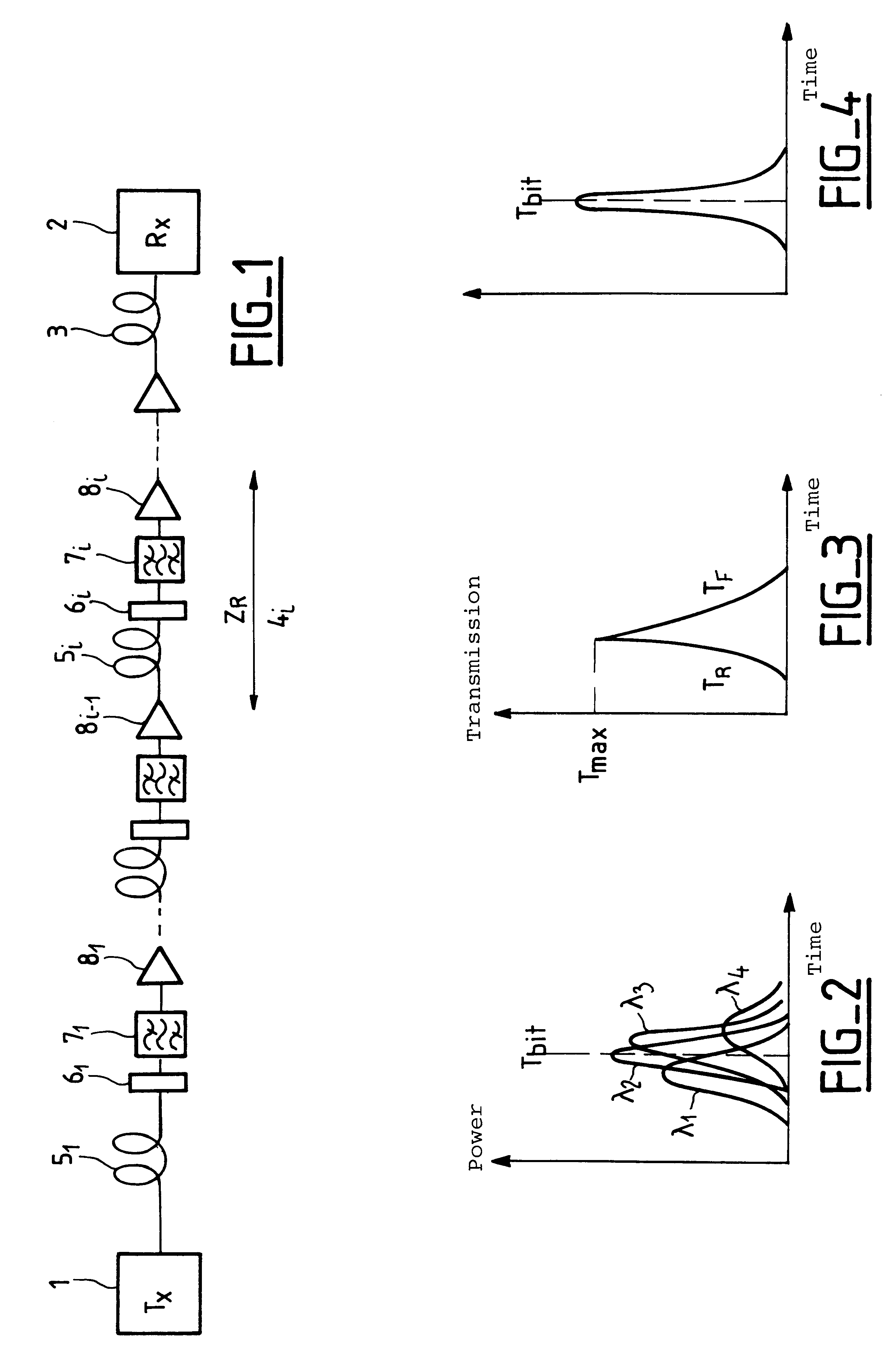Optical fiber transmission system for soliton signals with wavelength multiplexing and saturable absorbers
a transmission system and optical fiber technology, applied in the field of optical fiber transmission systems, can solve the problems of intrinsic limit on the data rate of a soliton link, another limit is imposed by amplitude fluctuations due, and approach is limited
- Summary
- Abstract
- Description
- Claims
- Application Information
AI Technical Summary
Benefits of technology
Problems solved by technology
Method used
Image
Examples
first embodiment
FIG. 1 shows the invention in which saturable absorbers are used for optical modulation, e.g. absorbers based on semiconductor materials or on a fiber that is highly non-linear. The transmission system of FIG. 1 comprises an emitter Tx 1, a receiver Rx 2 connected to the length of fiber 3, and n segments 4.sub.i for i=1 to n. The emitter 1 emits soliton pulses into the first segment i=1, which pulses are in the various channels of a wavelength multiplex and are at wavelengths .lambda..sub.1 to .lambda..sub.n. The various wavelengths are selected using a frequency allocations scheme that, for a given interval Z.sub.R, gives rise to relative slip between the various channels that is substantially equal to an integer multiple of the bit time. The last segment i=n is connected to the fiber 3 which conveys the soliton pulses to the receiver 2.
Each segment 4i comprises a length of fiber 5i whose outlet is connected to a saturable absorber 6.sub.i ; the outlet from the saturable absorber c...
third embodiment
In a third embodiment, the invention proposes saturable gain amplifiers (SGAs) instead of the saturable absorbers 5.sub.i of FIG. 1, for example semiconductor amplifiers presenting said characteristic. Such semi-conductor amplifiers are well known per se to the person skilled in the art, they are independent of signal polarization, reliable, and also have fast saturation dynamics (less than 1 nanosecond). This makes it possible to ensure that the regenerators respond quickly, and also to provide a high data rate for each channel in the multiplex.
The response of such amplifiers can be controlled from one terminal or the other, in the same manner as a clock constituted by black solitons. Such a clock is described in above-mentioned French patent application 96 / 12746 and is constituted by an uninterrupted run of black solitons of width lying in the range 0.20 times to 0.33 times the bit time.
The effect of such a black clock is to saturate the gain of the amplifier outside its periods f...
PUM
 Login to View More
Login to View More Abstract
Description
Claims
Application Information
 Login to View More
Login to View More - R&D
- Intellectual Property
- Life Sciences
- Materials
- Tech Scout
- Unparalleled Data Quality
- Higher Quality Content
- 60% Fewer Hallucinations
Browse by: Latest US Patents, China's latest patents, Technical Efficacy Thesaurus, Application Domain, Technology Topic, Popular Technical Reports.
© 2025 PatSnap. All rights reserved.Legal|Privacy policy|Modern Slavery Act Transparency Statement|Sitemap|About US| Contact US: help@patsnap.com



